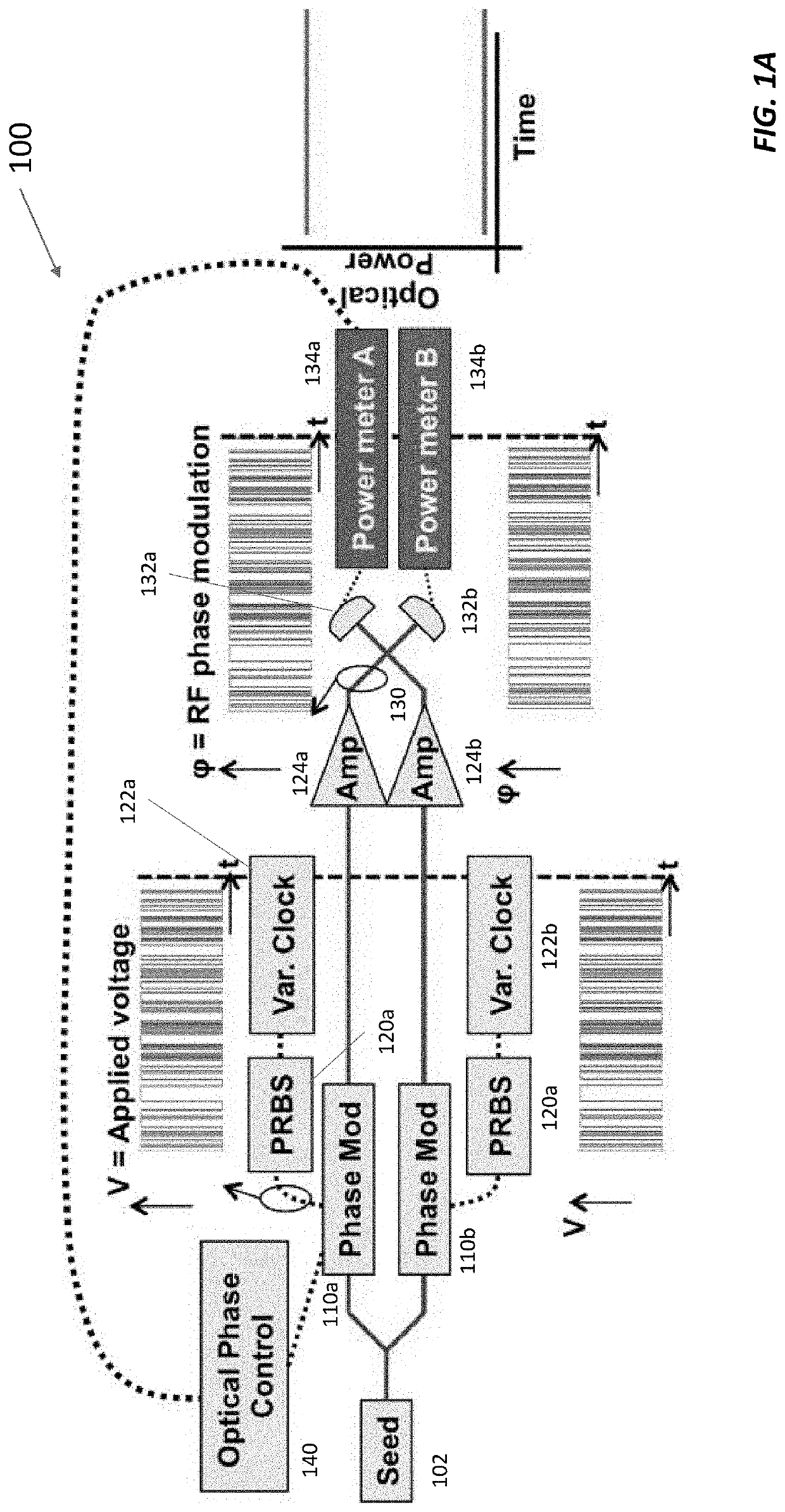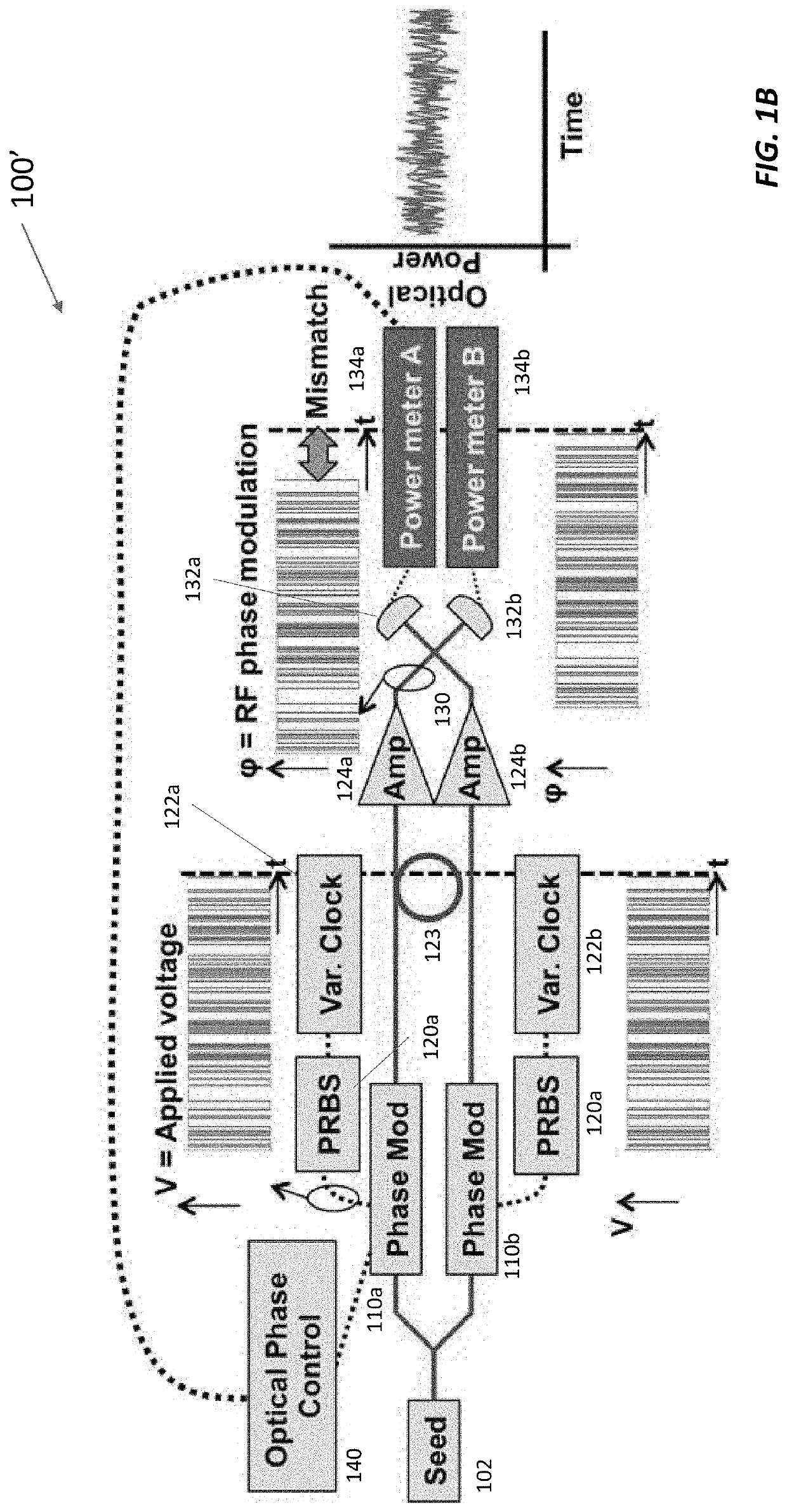SBS Suppression and Electronic Path Length Matching in Coherent Beam Combining
- Summary
- Abstract
- Description
- Claims
- Application Information
AI Technical Summary
Benefits of technology
Problems solved by technology
Method used
Image
Examples
Embodiment Construction
[0031]FIG. 1A shows a coherent beam combining system 100 with two channels or arms, each of which contains a fiber amplifier 124a, 124b (collectively, fiber amplifiers 124). (Other coherent beam combining systems may have tens or even hundreds of parallel arms for higher power output.) The fiber amplifiers 124 are seeded with respective copies of seed laser beam from a fiber-coupled seed laser 102. The fiber amplifiers 124 amplify these copies, and a beam splitter 130 combines them to produce a high-power output at port A as measured by photodetector 132a coupled to power meter A / 134a and little or no power at port B as measured by photodetector 132b coupled to power meter B / 134b (collectively, power meters 134).
[0032]A fiber-coupled phase modulator 110a, 110b (collectively, phase modulators 110) is placed before the amplifier 124a, 124b in each arm of system 100 to broaden the linewidth of the laser beams with pseudo-random bit sequence (PRBS) modulation in order to suppress SBS. E...
PUM
 Login to View More
Login to View More Abstract
Description
Claims
Application Information
 Login to View More
Login to View More - R&D
- Intellectual Property
- Life Sciences
- Materials
- Tech Scout
- Unparalleled Data Quality
- Higher Quality Content
- 60% Fewer Hallucinations
Browse by: Latest US Patents, China's latest patents, Technical Efficacy Thesaurus, Application Domain, Technology Topic, Popular Technical Reports.
© 2025 PatSnap. All rights reserved.Legal|Privacy policy|Modern Slavery Act Transparency Statement|Sitemap|About US| Contact US: help@patsnap.com



